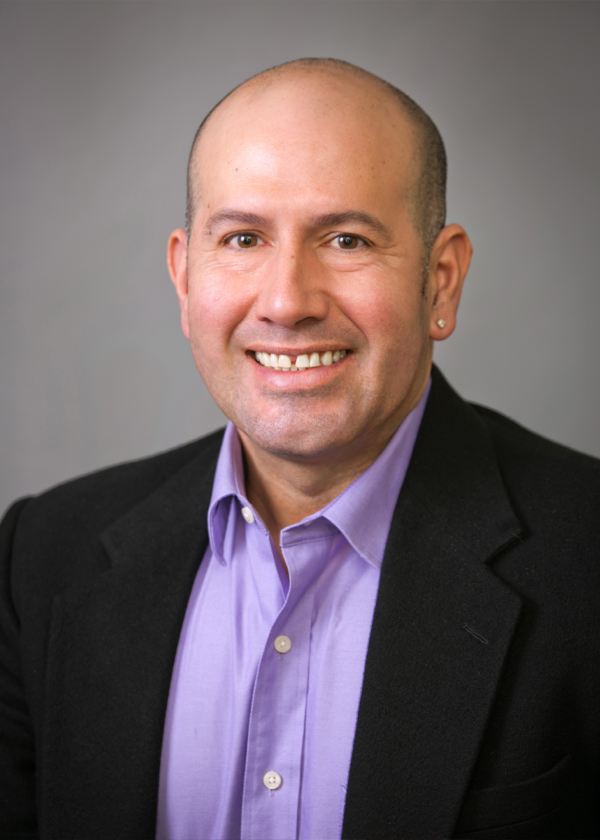the Caribbean and Central and South America.
More than half of California’s students are Hispanic and/or Latino and schools play a critical role in preparing these students for success in college, career and civic life. California School News interviewed Joaquin Rivera, CSBA’s Director-at-Large, Hispanic and trustee on the Alameda County Board of Education, for his perspectives on this growing student population.
Tell us a little about your background — what made you want to be a school board member? What motivated you to become involved with CSBA?
Growing up in Puerto Rico, my parents were public school administrators and they instilled in me the importance of education. In addition, I had many good and inspiring teachers along the way who served as role models. I have a bachelor’s of science in chemistry from the University of Puerto Rico, Mayaguez and a master’s of science in chemistry from UC Berkeley. I’m a community college chemistry professor. I served on the Berkeley School Board for 12 years and have been a member of the Alameda County Board of Education for the last nine. Education has always been very important in my life and I wanted to make a difference in the lives of the students in my community and the state of California. Serving my community has always been a life goal. That’s why I ran for school board and became involved with CSBA.
What does it mean to be CSBA Director-at-Large, Hispanic?
It is an honor to be the Director-at-Large, Hispanic and to represent the Hispanic/Latino students and board members in the CSBA Board of Directors. The majority of students in California are Hispanic/Latino and Hispanics are the largest minority group in the U.S. They must have a voice at the table — I am that voice. This position allows for greater access for diverse voices and perspectives. However, it is important to acknowledge that there isn’t one community or voice, but a patchwork of many nationalities with diverse cultural and social perspectives. One of my roles is to uphold the many voices while amalgamating them to be cohesive, where possible.
How did your CSBA Masters in Governance training affect your governance style?
The Masters in Governance training gave me the knowledge and skills to become a better board member. It helped me become a better member of the governance team to move our organization in the right direction.

CSBA Director-at-Large, Hispanic and trustee on the Alameda County Board of Education
According to the 2017–18 California Assessment of Student Performance and Progress results in math and English language arts, a significant achievement gap persists between Latino students and their white and Asian peers across all tested grades. What supports do you think students need to address this achievement gap?
Closing the achievement/opportunity gap is not easy. Strategies that districts can use include: enhanced cultural competence; comprehensive support for students; outreach to students’ families; extended learning opportunities; classrooms that support learning; supportive schools; making closing gaps a schoolwide responsibility; setting high expectations and providing rigorous, deep curricula; access to qualified staff; and adequate resources and funding.
Research has shown that students with teachers and leaders of the same ethnicity realize better academic outcomes. Over half of California’s students are Hispanic; however, only about 20 percent of teachers and school board members are Hispanic. What are your thoughts on this and how can boards work to diversify district staff?
Students perform better when they are exposed to teachers who look like them and who have similar backgrounds. Research has largely supported the theory that a more diverse teaching force is good for students. Many Hispanic students almost never see faces like their own at the front of a classroom. Teachers can be the most influential figure in a students’ educational journey. As the Latino population continues to grow, it is imperative to have a teaching workforce that reflects the student population and our diverse nation. Districts can engage in “grow your own” programs, as well as alternative certification and other models of teacher preparation at colleges and universities. These will provide more opportunities for Latinos to enter the teaching workforce. They can also work on creating partnerships with their local community colleges, creating teacher learning communities and doing outreach to bilingual students and non-traditional student teacher candidates. In addition to teacher recruitment, we must focus on retention. By increasing the retention of Latino teachers, we also increase the presence of Latinos in other school positions such as school counselors, administrators and other school leaders. These objectives may still fall short. I also recommend comprehensive teacher training that focuses on cultural sensitivity. This could eventually be mandated as part of teacher training and credentialing.
What is the most challenging part of being a board member? What about the most rewarding?
The most challenging part is when you have to make tough decisions that you know will impact the quality of education, such as cutting the budget or programs. In those times it is important to remember that the focus of all board decisions should be based on kids. As board members, we must represent all students — our decisions must be made in the interest of the total school system and not made solely for special groups or interests. The most rewarding is to see your students succeed. Attend graduations and see success all around you, particularly those that succeeded against all odds.